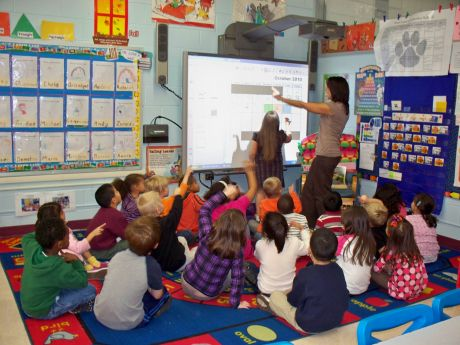"Driving Questions"
Teachers should use technology because it provides the opportunity to engage, inspire, motivate, and transform student's work efficacy and willingness to learn. Technology is a social networking engine that can communicate anywhere around the world. It allows you to live in the U.S. but talk to a friend in China. In the past, communication between two different places took days while you waited for the delivery man to send a letter. Now, we communicate instantly and when we have something to say to someone, all we need is to pick up our laptops or cell phones and send an email, instant message, Facebook comment, etc. This is good news for Education and teachers because there are so many letters, emails, updates, notices, etc. that teacher's need to communicate to parents, students and peers. With all of the work they have to complete, using technology to communicate is the most efficient and easiest route. Of course, all of this is only possible once you understand how to work technology well and all of the resources that are available to you. It is beneficial to the students and the classroom learning as a whole when the teacher is well informed and well versed.
WHICH technology tools have the greatest potential
to improve communication between teachers and others?
HOW do these tools improve communication?
I believe that one of the potentially greatest technological tools that can be used to improve communication between teachers and others is the internet. There are numerous amounts of resources, such as blogging, wikis, emails, personal profiles, etc. In particular, blogs are especially enjoyable, clear cut, and get the information across. If a teacher were to use her blog as the primary resource for getting information to parents about classroom activities and their student's performance, it would be so convenient and easy for a parent to simply get online and view the blog. It doesn't rely on a student to get the weekly or monthly newsletter to their parents, and encounter the possibly that it will be lost. Blog posts and link posts are flexible to everyone's individual schedules and a parent can go and check updates at home or whenever they have time. Blogs also allow you to create threads where a parent could post a question and the teacher could answer, as well as other parents. That would allow the parents to communicate to one another rather than only the teacher. I believe that keeping parents informed and up to date is extremely important. They should always be involved in their student's learning and be a co-supporter with the teacher for the student. I think blogs, more than any other technology based tool I've learned, would be the most affective way to communicate in education with students, parents, and peers. I believe that these tools improve communication in great ways.
In addition to the blog as an upcoming tool, I think it would be very strategic and effective for a teacher to create two separate blogs. One for the parents, and one for the students. The student blog can remind students of classroom activities, upcoming and past assignments. The student work could even be posted online as an example for a student to see a nicely done project. There are so many ways and advantages to using blogs to communicate for both the parents and students!


